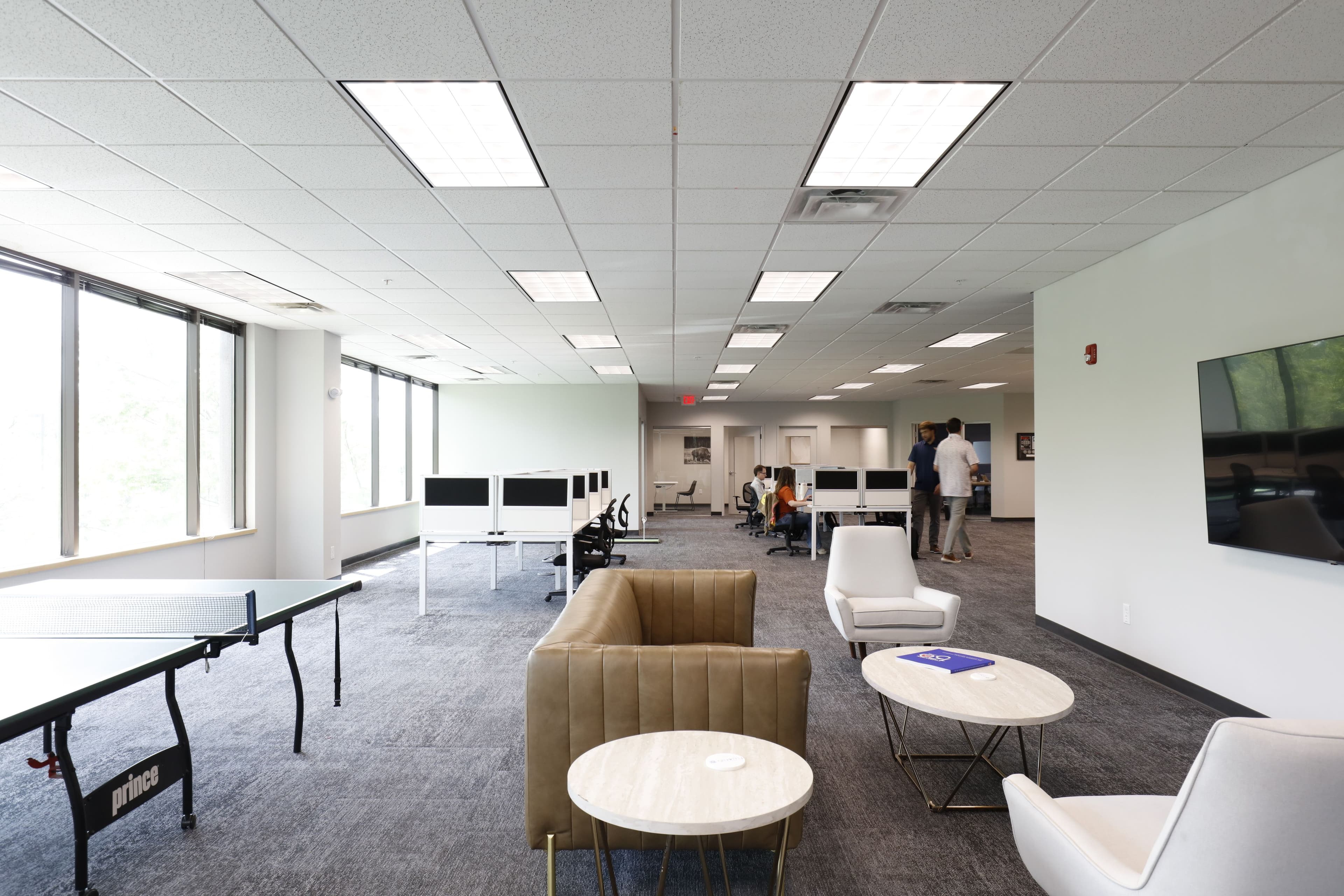
Three Smart Office Renovation or New Build Furniture Choices
Inspiration
Design
Do You Know How to Keep Your Employees Happy and Maximize Their Productivity?
Before you purchase office furniture consider these two facts: The average American’s work week has expanded from the standard 40 hours to 44 hours; and, research has proven that a happy employee is 20% more productive when working in a comfortable environment.
How can you use this information to help you during your office-furniture search? Keep the words comfortable and engaging in mind – after all, your employees will be spending a considerable part of their day in the office.
Before purchasing new furniture for your office space, take some time to speak to your employees. Ask them what difficulties they might have with the furniture they use now. They’ll appreciate you taking taking the time to include them in the discussion and they’ll likely have some good information for you. Just keep in mind that no one can give 100% of their concentration to company projects, when they’re using desks which are too high or low, and chairs which are hard and contort their bodies, resulting in stiff necks, aching shoulders, painful backs and tired legs.
Here are three types of office furniture specifically designed for comfort, and ultimately increased productivity, and recommended by many office-design specialists.
1. The Ergonomic Chair
For the most comfort, always choose an ergonomically-designed chair. It should be adjustable according to the individual’s height and the height of the desk. Also, make certain the chair has maximum lumbar support, the seat can be tilted and the chair back can be altered according to each person’s need. Look for chairs which have padding and adjustable armrests, which help to support and relax the forearm, letting the shoulders rest and reducing muscle fatigue in the back.
You might want to consider a mesh material for the chair back, allowing for air flow and keeping employees cooler.
As for the chair seat, no employee would be comfortable sitting on a hard surface for 8 or more hours, so seats should be padded with sufficient depth to reduce stress and pressure. Legs shouldn’t dangle from the chair, a posture which can cut off circulation, and the knees should be inline with the hips, or slightly lower, with feet flat on the floor. Also, you might want to consider a mesh material for the chair back allowing for air flow and keeping employees cooler.
2. The Stand-to-Sit Desk
Eight hours or more of standing or sitting is not good for anyone’s health. Most of us sit in our office chairs for five to six hours a day. Add drive time to and from work and time sitting at home watching TV, and it all adds up to half of our day spent sitting. Sitting for long periods of time, day after day, can contribute to poor circulation, pinched nerves, numbness, muscle degeneration, back problems and increased blood sugar. A recipe for an unhealthy and unhappy employee.
Choosing a powered stand-to-sit desk encourages regular transitions between sitting and standing, which improves blood flow. But, if your office environment requires a traditional style desk and seating arrangement, encourage your staff to stand and walk a bit every hour. To make certain they’re up and moving, position the printer and the coffee break station in the farthest corner of the office.
3. The Communal Work Desk
Exchanging ideas, sharing innovative solutions, mentoring new employees or discussing technical challenges are all reasons proponents of collaborative work spaces appreciate the communal work desk. This particular piece of furniture is designed to accommodate technology, but can be used for client conferences, casual group meetings, collaborative projects or even just social moments during coffee breaks or lunch. Even in a traditional office setting, an interior design specialist can help you find a spot for this indispensable table.
There are communal work desks for any size room, whether you buy one table that accommodates two people or you purchase several connecting tables to serve a large group. You can also choose to have table top or under-the-table power and data access and shelves where laptops and phones can be stored out of the way during meetings, casual gatherings or meals. If some of your employees would prefer a little privacy, choose work desks with removable panels.
The communal work desk isn’t just a work table, but a work space where your employees can connect, exchange ideas, solve problems and ignite a creative spark bringing the pieces of a project together – which might not have happened when working alone.
One last tip
If you’re not certain you or your employees will appreciate a particular type of furniture, contact an office furniture store or interior design specialist and ask if renting that piece is an option. Then, let your employees have an opportunity to test it out. Let them decide if that stand-to-sit desk or mesh lined chair is the right choice for them.
Tom White
Partner
Related Articles

